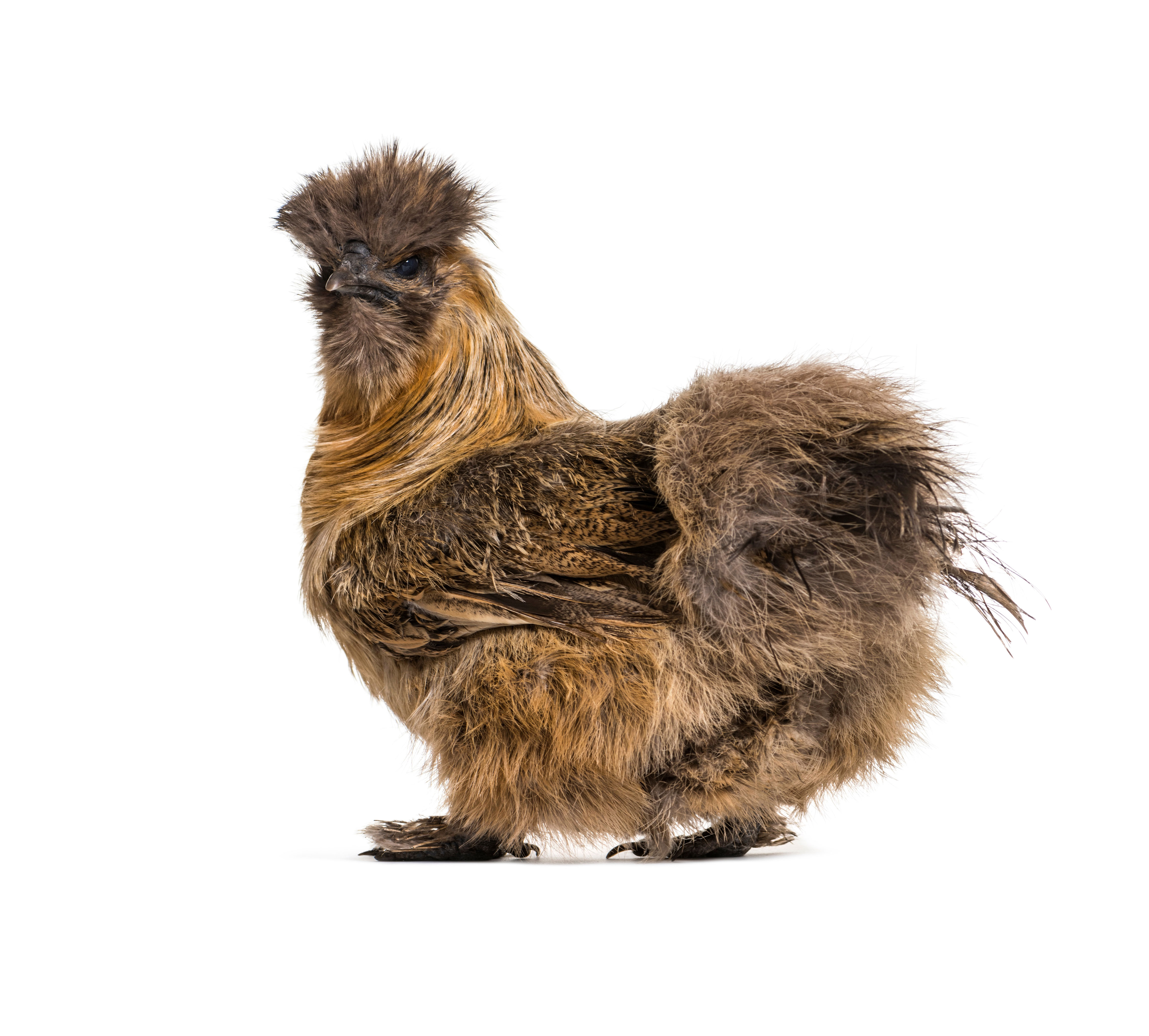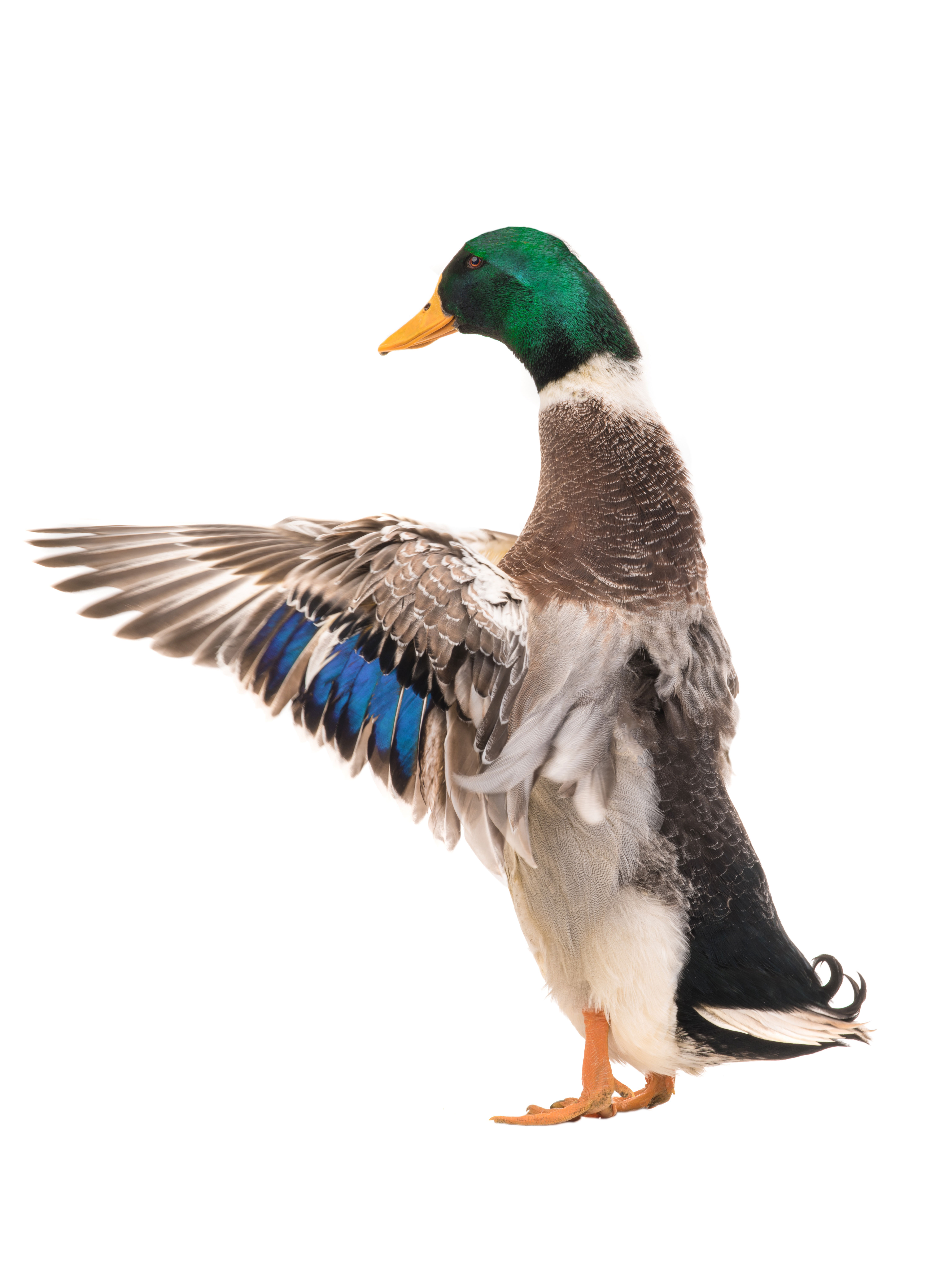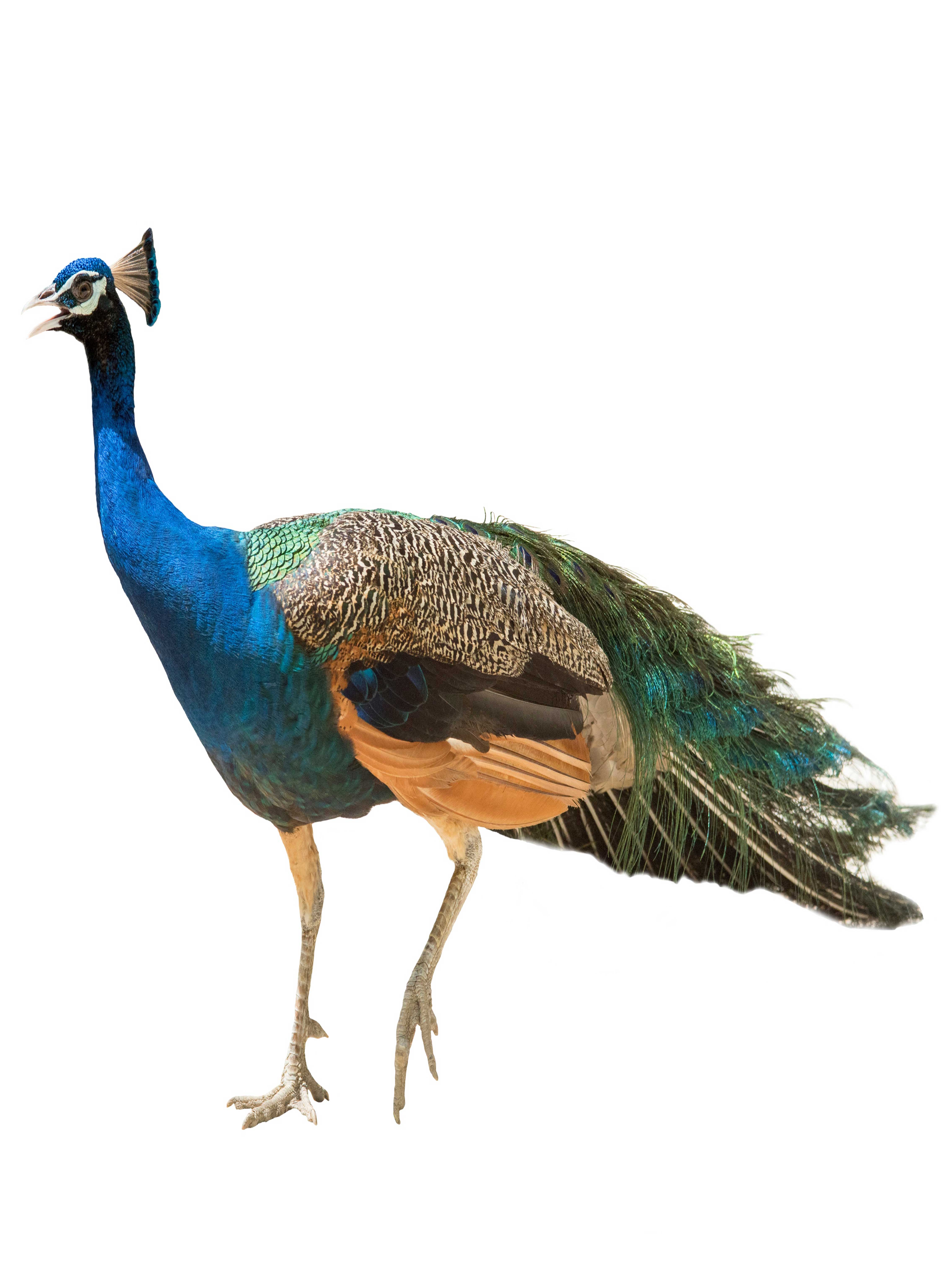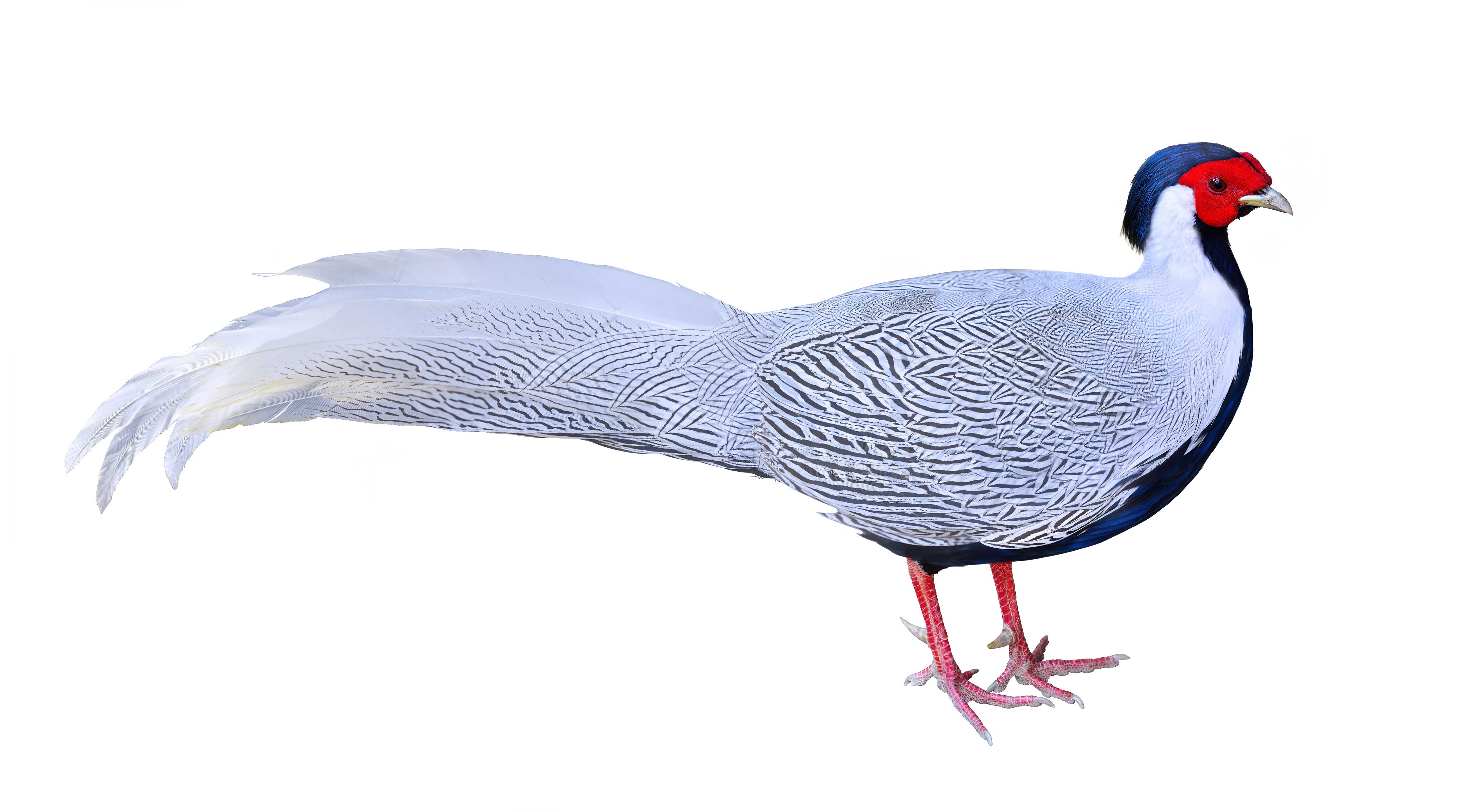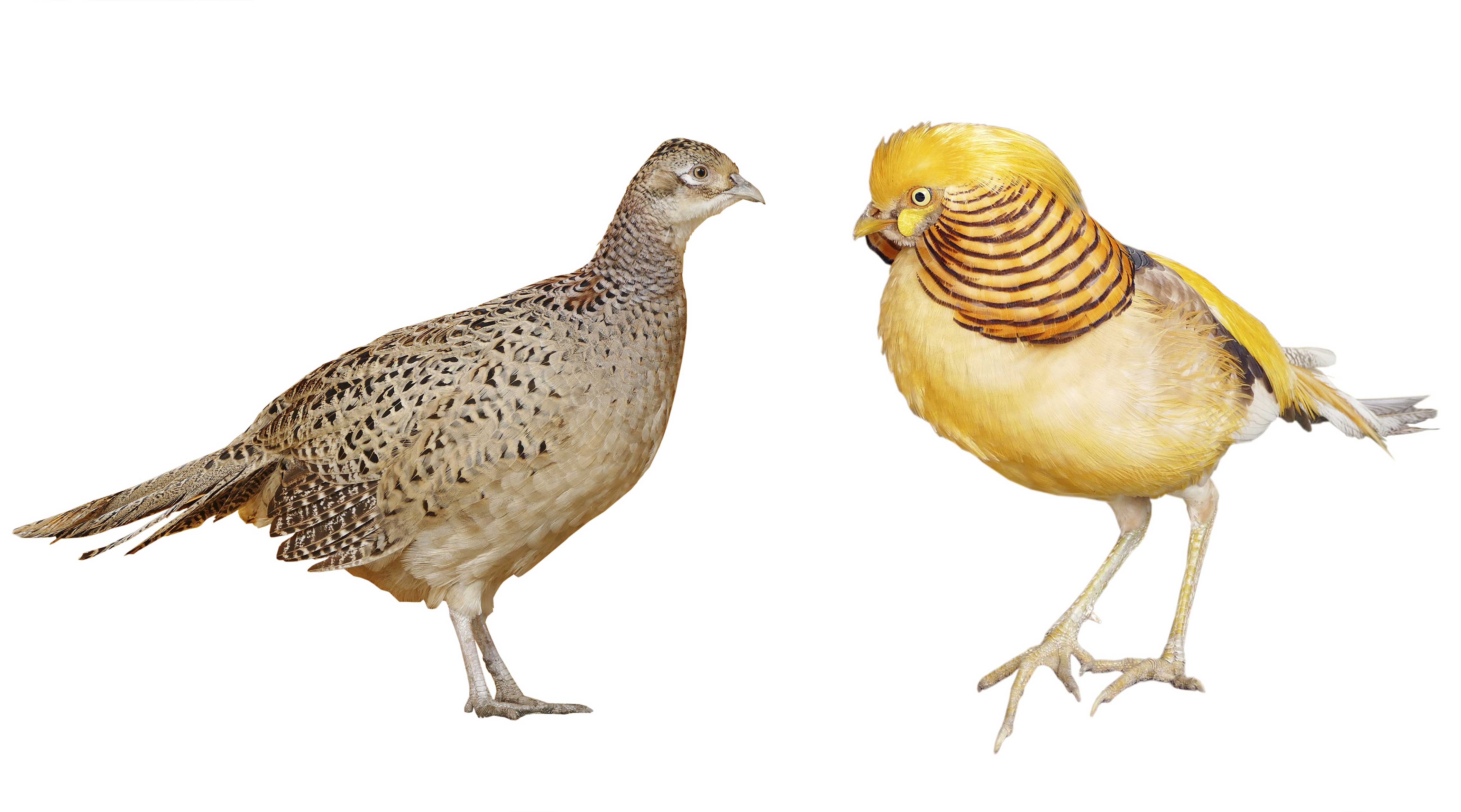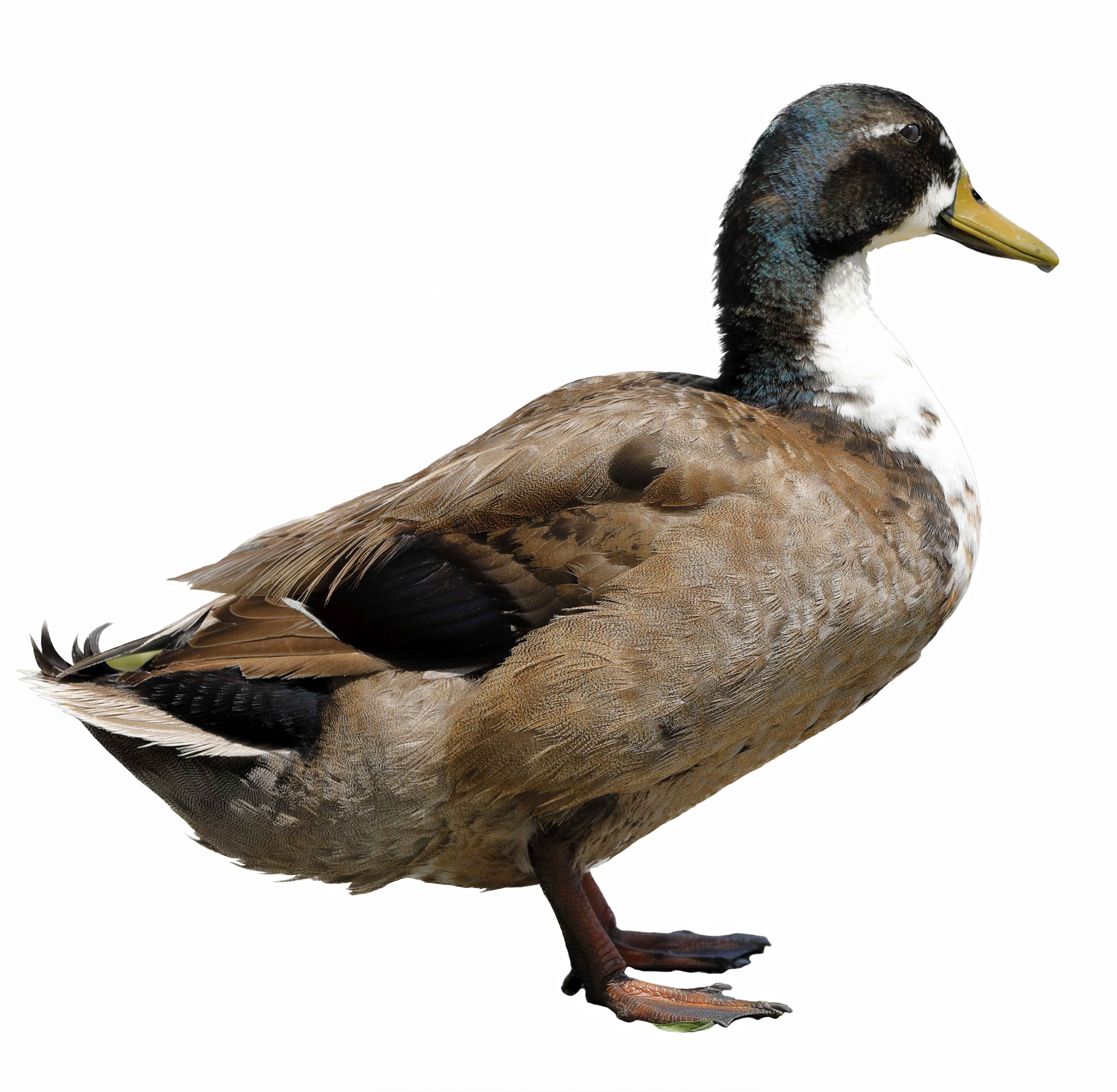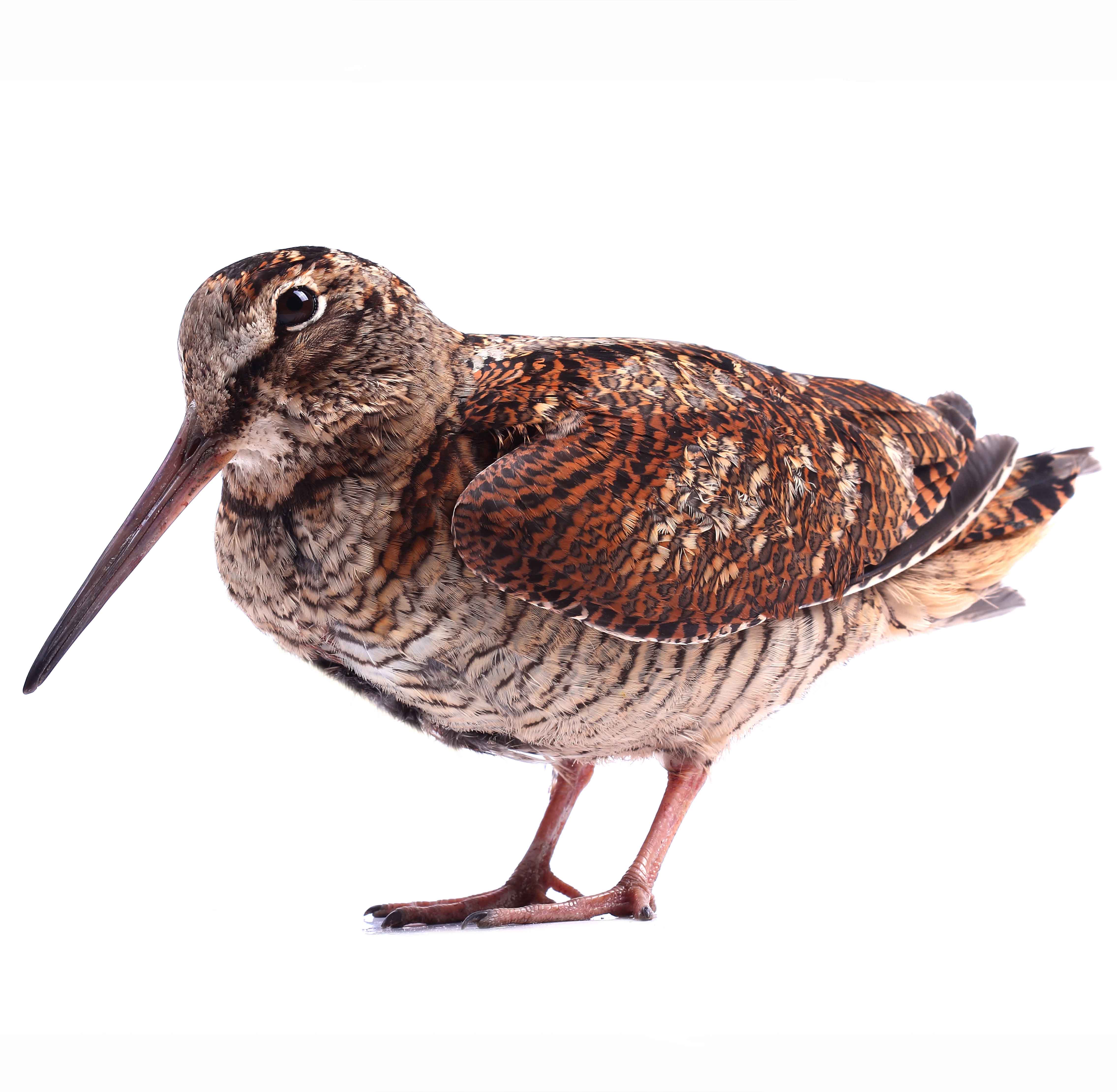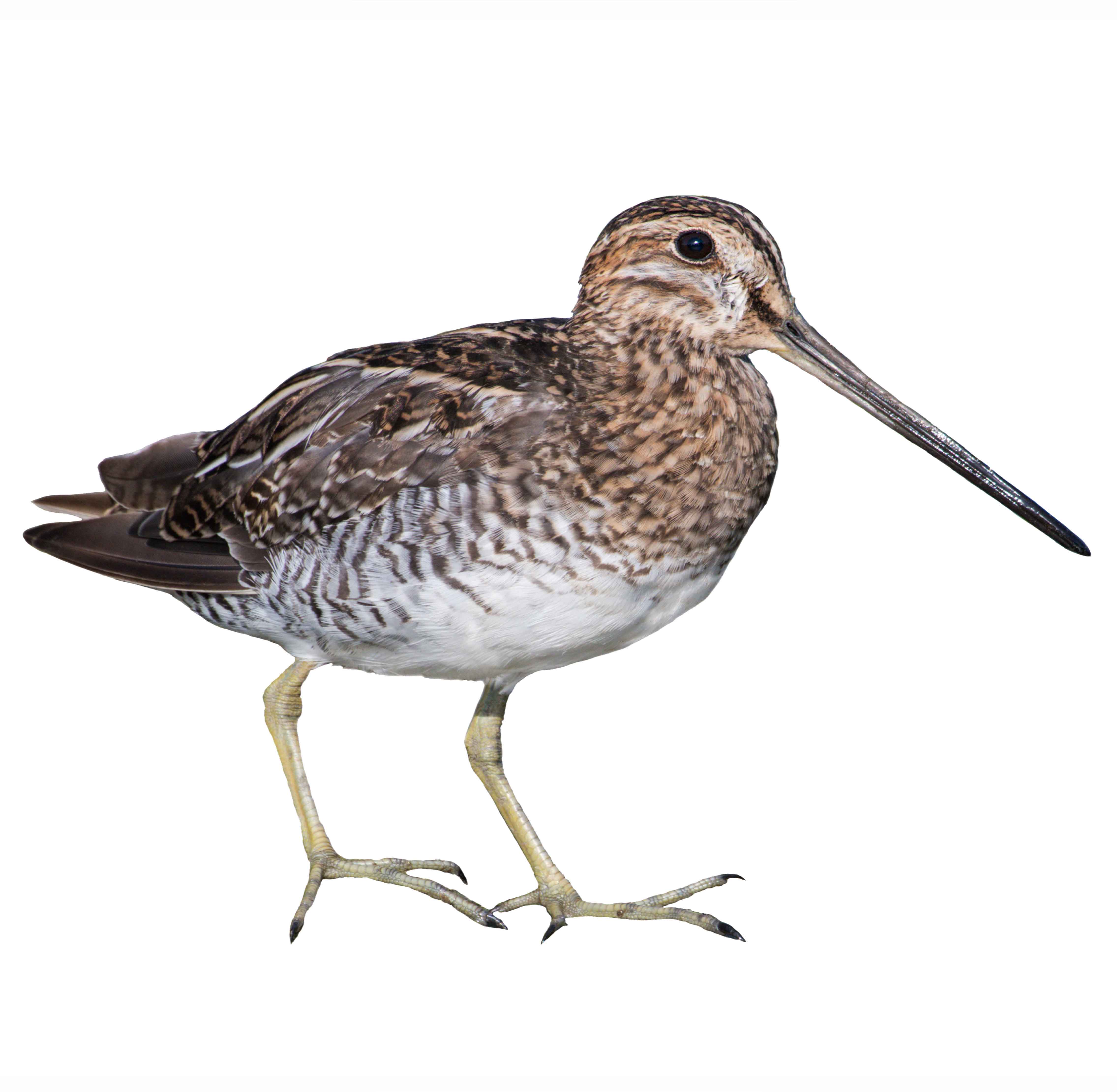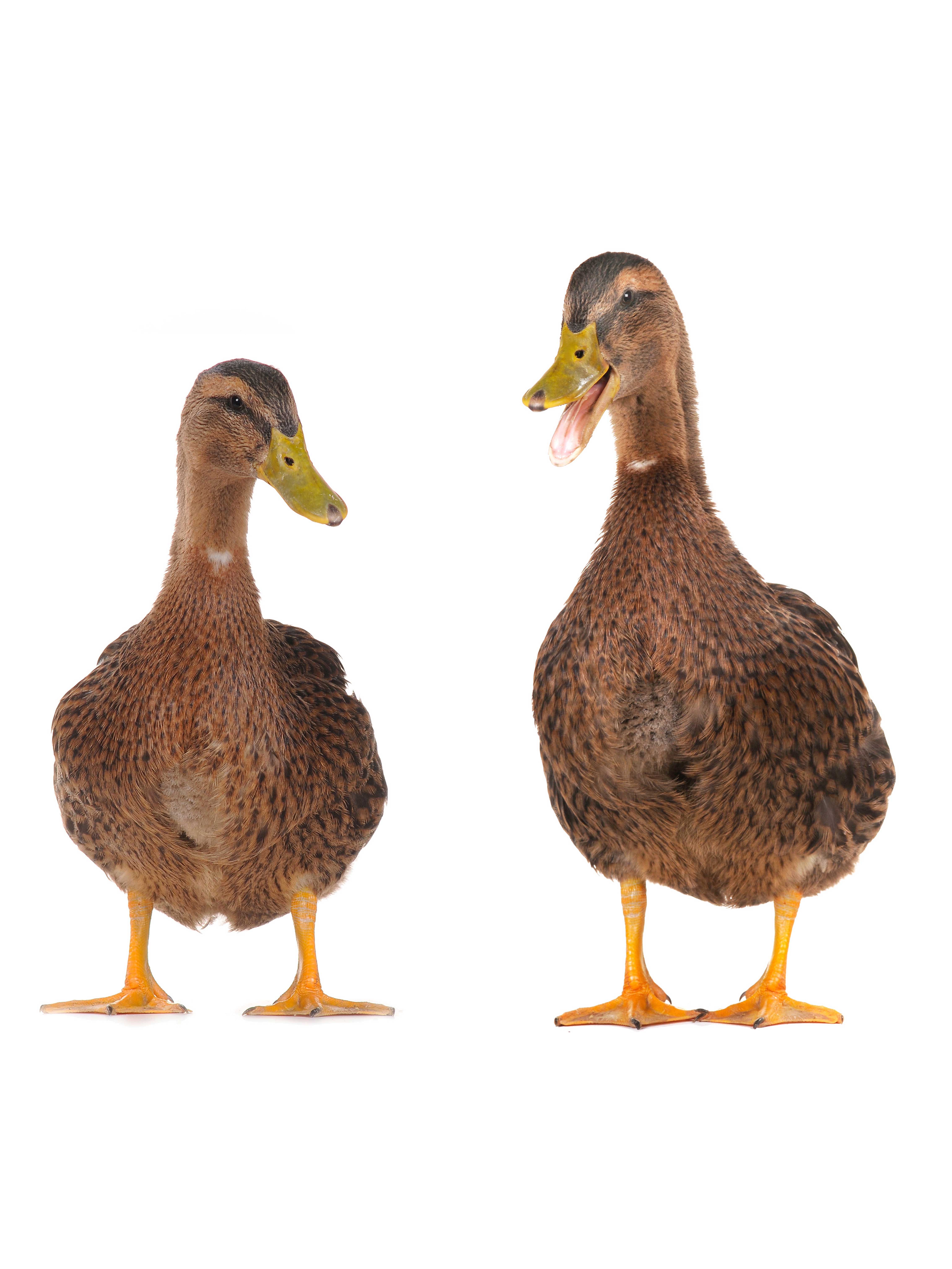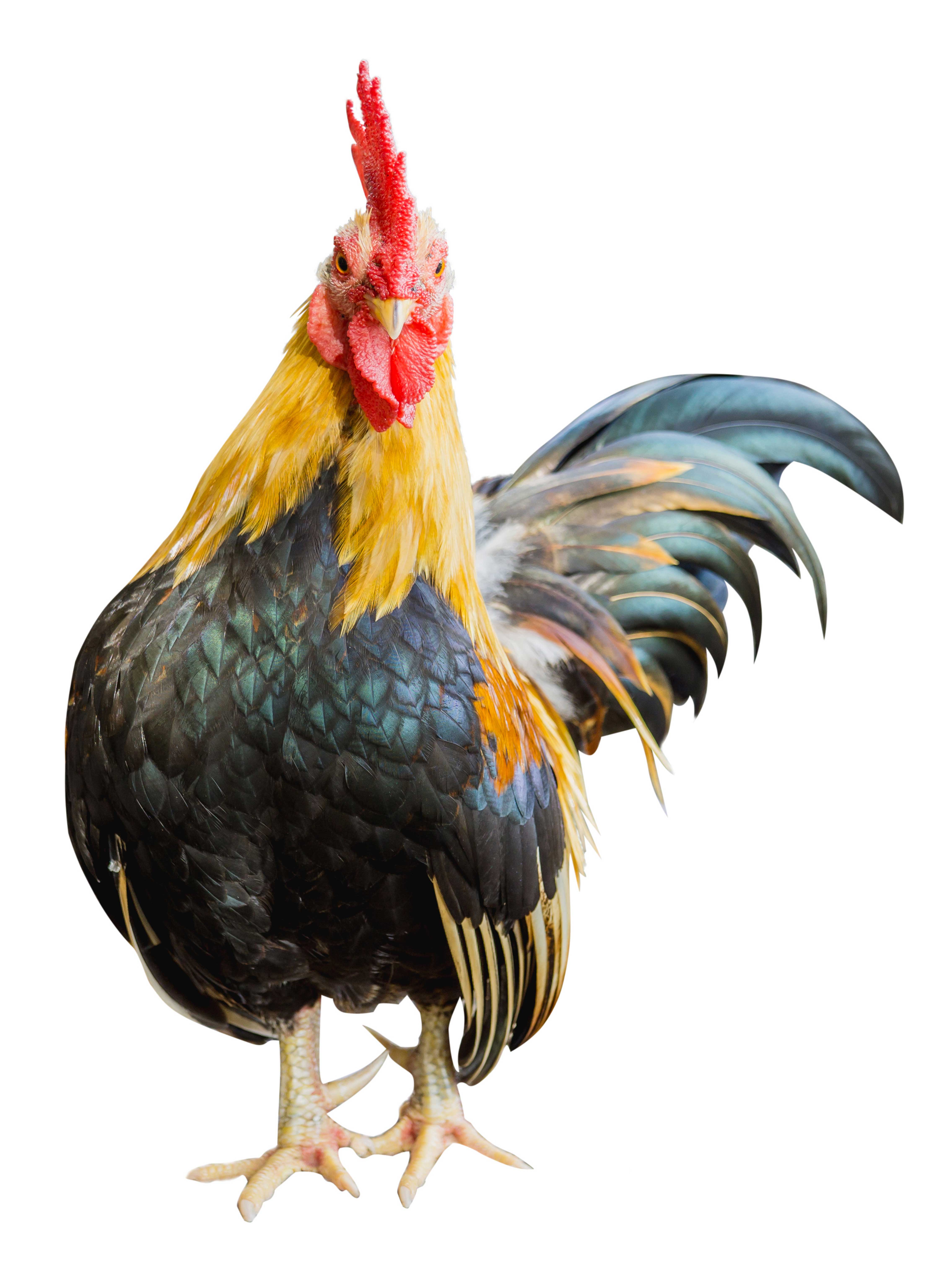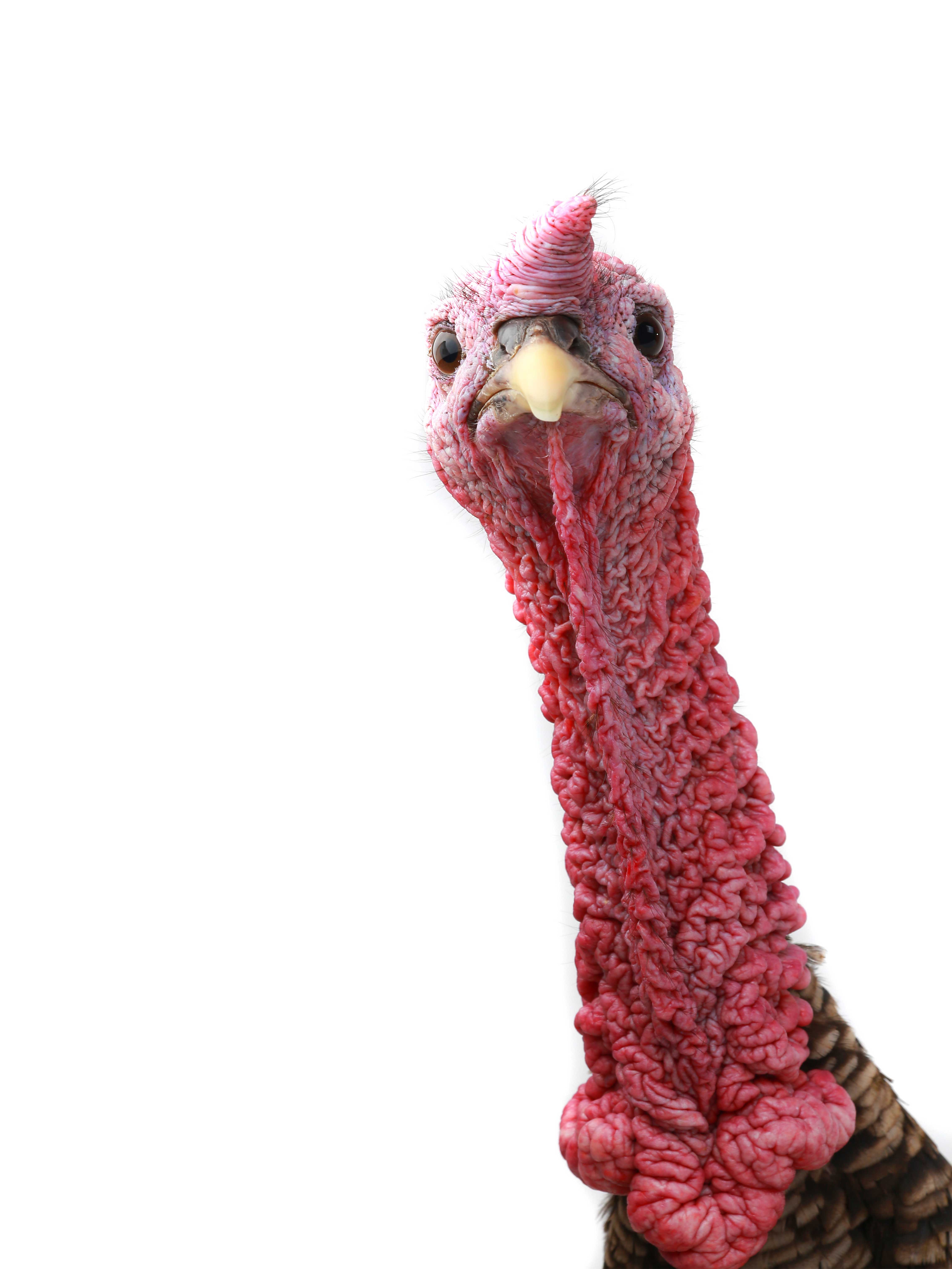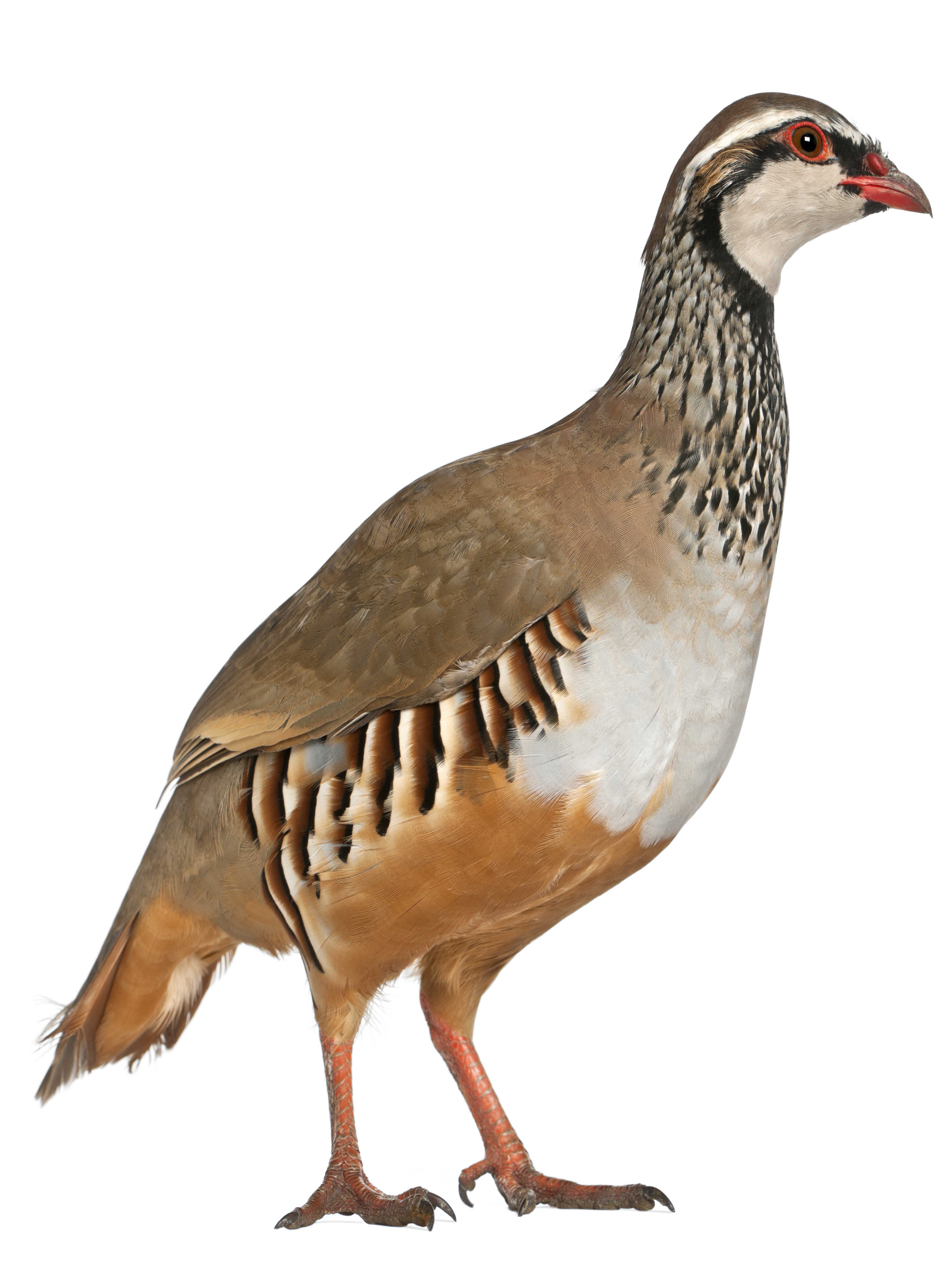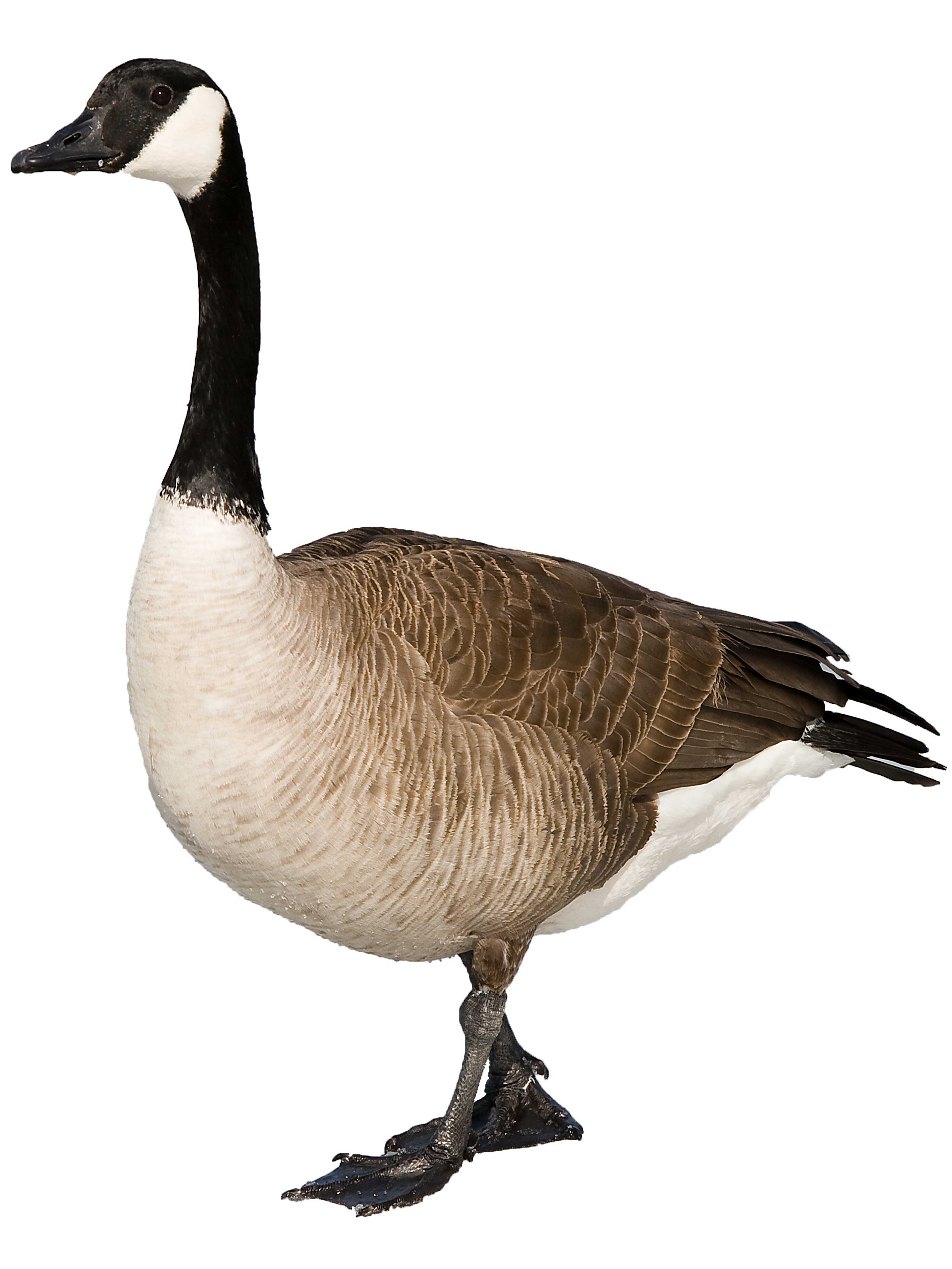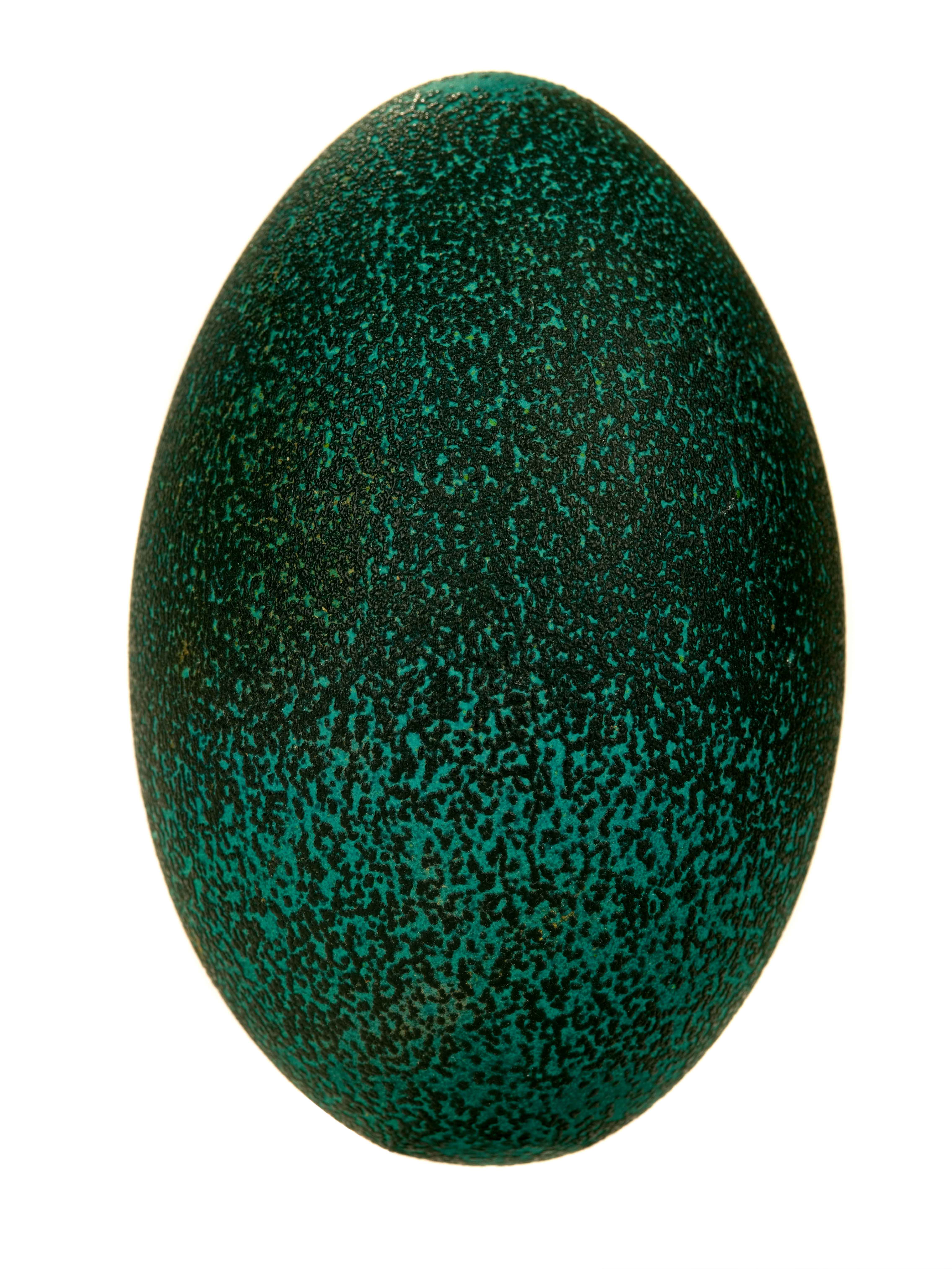SAMPLE THE BOOK
VIEW THE CONTENTS | TURKEY | BALINESE ROAST DUCK (BEBEK BETUTU) | THE PHYSICS OF AN EGG SHELL
TURKEY
The turkey is a very large bird. Indeed, the wingspan of an adult turkey can be up to 1.8m and have a mature weight of up to 18kg. Most commercial turkeys will weigh about 4.5kg – 6.5kg.
Kitchiner observed:
“Turkeys (especially large ones) should not be dressed till they have been killed three or four days at least, in cold weather six or eight, or they will neither look white nor eat tender.
Turkeys, and large fowls, should have the strings or sinews of the thighs drawn out.
Truss them with the legs outward, they are much easier carved.”
Turkey has recently become the classic Christmas roast in this country, but it has been traditional Christmas food in Europe for a very long time. Mrs Beeton described roast turkey as follows:
“A noble dish is a turkey, roast or boiled. A Christmas dinner, with the middle classes of this empire, would scarcely be a Christmas dinner without its turkey; and we can hardly imagine an object of greater envy than is presented by a respected portly paterfamilias carving, at the season devoted to good cheer and genial charity …”
Turkey is a really good meat. It is sweeter than chicken, there is more of it and it is a special thing. Reserved for Christmas as it usually is, it is a spectacle and deserving of special attention. The problem, apart from the degree of difficulty in cooking the thing, is that an Australian Christmas is apt to be really, really hot and not the best time to enjoy such a beast. As Clive James observed:
“It was the usual Australian Christmas dinner, taking place in the middle of the day. Despite the temperature being 100°F in the shade, there had been the full panoply of raging hot food, topped off with the volcanic plum pudding smothered in scalding custard. My mother had naturally spiked the pudding with sixpences and threepenny bits, called zacs and trays respectively. Grandpa had collected one of these in the oesophagus. He gave a protracted, strangled gurgle which for a long time we all took to be the beginning of some anecdote. Then Aunt Dot bounded out of her chair and hit him in the back. By some miracle she did not snap his calcified spine. Coated with black crumbs and custard, the zac streaked out of his mouth like a dum-dum and ricocheted off a tureen.”13
Such are childhood memories.
Nonetheless, our Anglo Saxon traditions mean that whilst Australians always talk about a different menu like cold seafood and Asian dishes we just cannot bring ourselves to do it. Every year I try to have a different menu, I really do. But I cannot obtain a consensus to do it. The likelihood of a 40°C Christmas Day makes no difference. It is always the same: turkey, roast vegetables and Christmas pudding. Maybe one day.
However, do not forget how big a turkey is and be prepared for the after effects of such consumption:
“Talking about eating, Madame Bergeret said that in Midi (neighbourhood of Toulouse especially) there used to be men who prided themselves on enormous powers of eating. They did not usually eat a great deal, but on occasions, when put to it, they would perform terrible feats such as consuming a whole turkey. The result sometimes was that they were very ill. The method of curing them was to dig a hole in the muck-heap, strip the sufferer naked, put him in the hole, and pack him tightly with manure up to his neck. The people who did this did it with gusto, telling the sufferer what an odious glutton he was. The heat generated promoted digestion in a manner almost miraculous, and next day the sufferer was perfectly restored.”14
13 James, C. – “Unreliable Memoirs”.
14 Bennett, A. – diary entry, 19 July 1907.
Brillat-Savarin (your new favourite source of food type quotes) made several pertinent observations in relation to turkey. First: “The turkey is certainly one of the most glorious presents made by the new world.”
Secondly: “The turkey is the largest, and if not the finest, at least the most highly flavoured of the gallinaceous family.”
Lastly, that: “The importation of turkeys became the cause of a great addition to the public fortune, and occasioned a very considerable commerce. By raising turkeys the farmers were able the more surely to pay their rents. Young girls often acquired a very sufficient dowry, and towns-folk who wished to eat them had to pay round prices for them. In a purely financial point of view turkeys demand much attention.”
Brillat-Savarin was a chap who well knew his stuff.
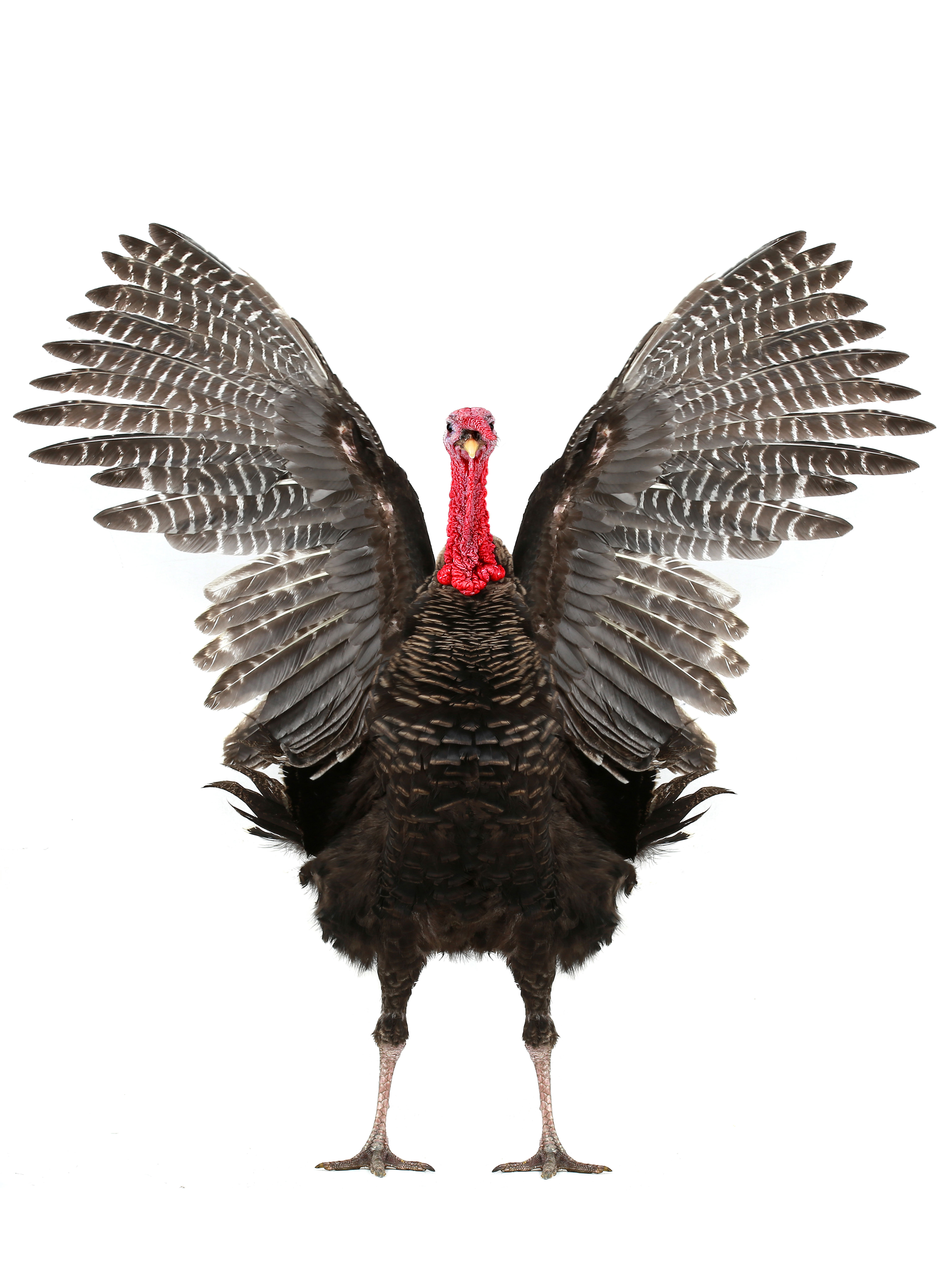

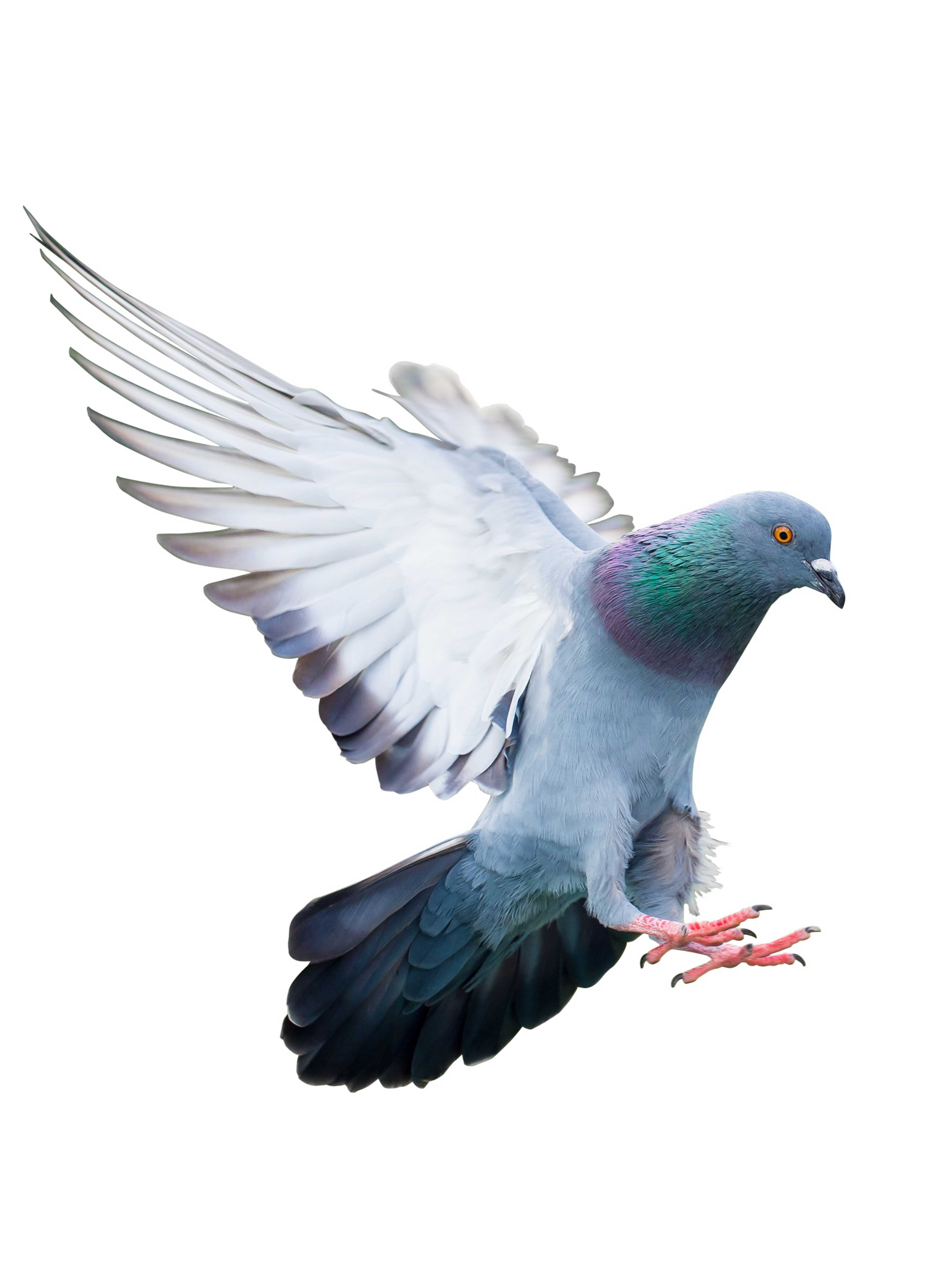
BALINESE ROAST DUCK (BEBEK BETUTU)
How can you ignore a dish with a name like bebek betutu? It sounds much better than the more prosaic Balinese roast duck. It simply has to be made. It is somewhat involved but not if you have a little time on your hands. Think of it as something to do on a Sunday afternoon.
Duck (at least 1.8kg) – 1
Belachan* (shrimp paste) – 1 tsp
Shallots (medium size, roughly chopped) – 6
Garlic (peeled, cloves, roughly chopped ) – 6
Galangal* (peeled, finely chopped) – 15g
Ginger* (peeled, finely chopped) – 15g
Kaffir* lime leaf (very thinly sliced) – 5
Candlenut* (unsalted, macadamia nut can be substituted) – 4-5
Lemongrass (white stalk only, bruised and roughly chopped) – 2
Chilli (long, red, deseeded and white membrane removed, roughly chopped) – 2-3
Lime juice (lemon juice can be substituted) – 2 tbsp
Palm sugar* – 40g
Turmeric* (peeled and finely chopped, or dry) – thumb sized piece or 1 tsp if dry
Peppercorn (black, cracked) – 1 tsp
Coriander* (seed, cracked) – 1 tsp
Cumin* (seed, cracked) – 1 tsp
Nutmeg (grated) – pinch
Coconut oil* (vegetable oil can be substituted) – 1 tbsp
Spinach – 300g Cinnamon* (quill) – 1
Banana leaf* (foil can be substituted) – sufficient to wrap duck
* Available from Asian grocers.
Wrap the shrimp paste in foil. Roast in a 180°C oven for 5-10 minutes, until quite strong smelling.
Wash and dry the duck. In a food processor, make a paste of all aromatic ingredients (but not the cinnamon and spinach). Once a smooth paste is achieved, (it is much easier than using a mortar and pestle, like the Balinese), fry the paste in a little coconut oil until aromatic (about 2 minutes). Set the paste aside and allow to cool completely. Use the paste (reserve about 2 tbsp) to rub onto the duck well both inside and outside and refrigerate the duck overnight (covered).
Preheat an oven to 180°C. Blanch the spinach, refresh and squeeze dry. Mix the spinach with the reserved spice paste and place inside the cavity together with a cinnamon stick and 1⁄2 a lemon or lime. Close the cavity with skewers or string. Wrap the duck in the banana leaf or foil.
Place the duck in the oven, reducing the temperature to 120°C after one hour. Cook thereafter for 3-4 hours until the duck is well cooked. Remove the duck from the pan once cooked. Drain off the fat and using a little water deglaze the pan to make a sauce. Brown the duck well under a grill.
Serve at once with rice and the sauce from the pan juices.
Moi is a Balinese river.
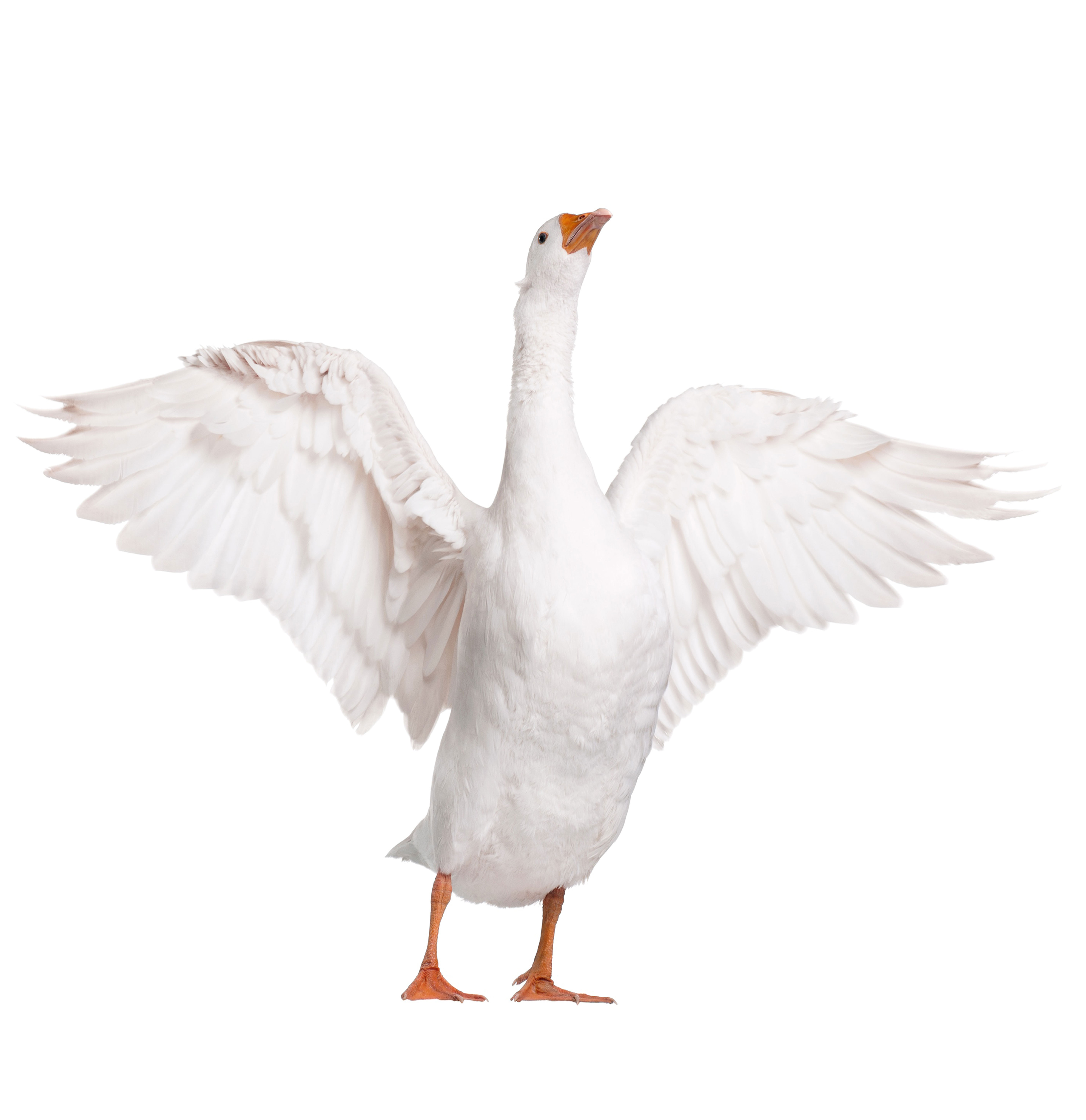
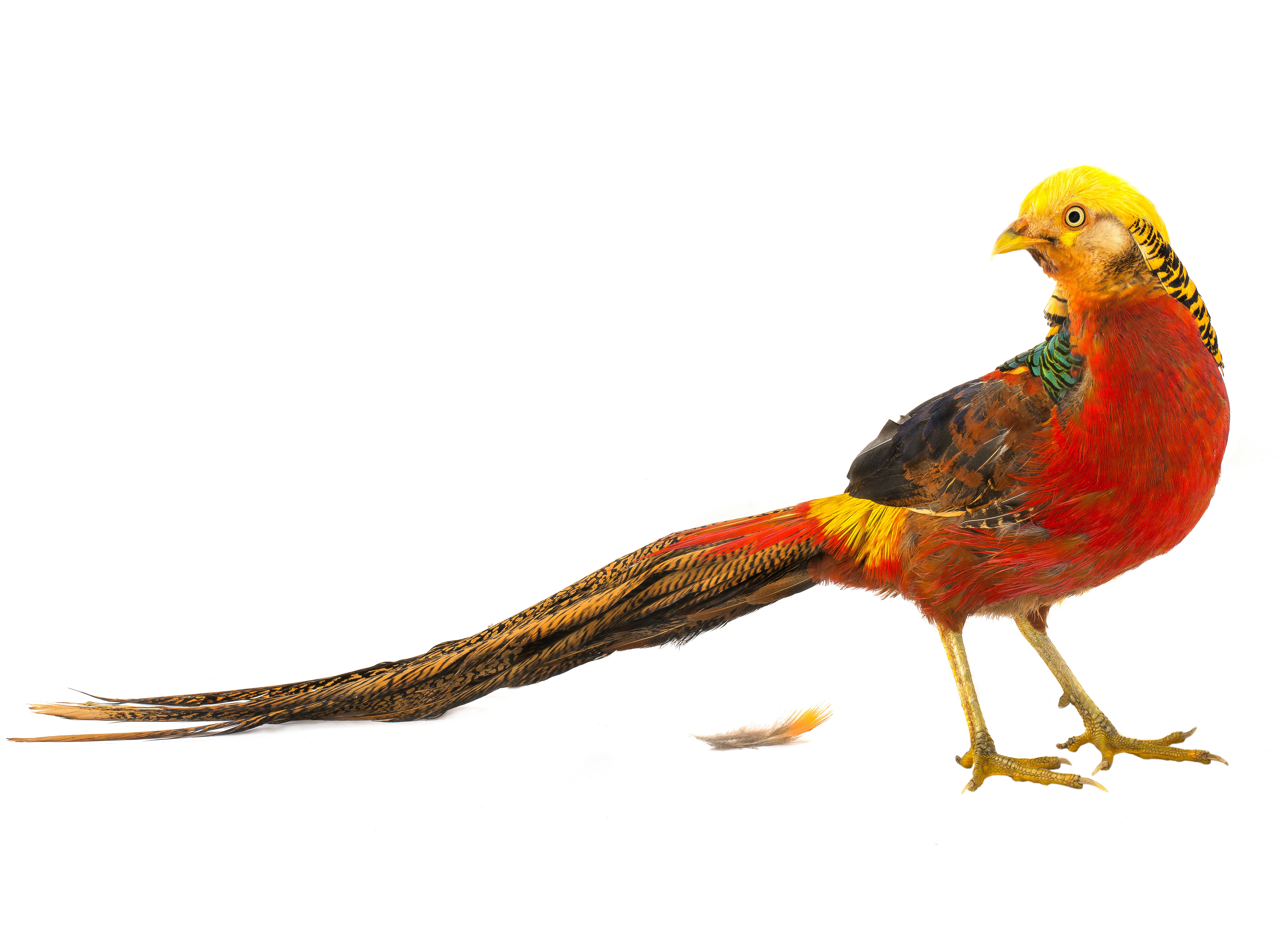
THE PHYSICS OF AN EGG SHELL
The fascinating nature of an egg is not confined to its edible interior. The egg itself is a marvellous piece of evolution. It is hard to find a better example of everyday natural selection.48 It is also a remarkable piece of engineering. It is, in fact, an example of an arch. The arch is one of the strongest structures in physics. It takes about 3.5kg of mass in weight or 35 Newtons of static force to break an egg. Remember that an egg weighs between 50-60g. It is remarkable that such a small thing can withstand the force of about 75 times its own mass. The reason why it can do this is all about geometry. The arch shape is very strong. Look in doorways in old buildings like churches. They are often arches. It is a strong way to hold up a building.
The egg is so well designed that compression forces applied evenly to it cannot break the shell. Trust me, it is true. The reason is obvious, eggs are incubated externally to the fowl. That is to say the fowl sits on the egg in order to keep it warm. Poultry does not weigh a great deal, in fact they go to great evolutionary lengths to ensure this. Small bones, and not many of them, small frame, and bones which are very porous to reduce weight. All the better to fly with you see. But I digress.Nonetheless, eggs must not be crushed during the incubation process. To do so would be a very bad thing from an evolutionary point of view, and of course, not great for the egg. Here is a way to test the engineering of evolution, or the evolution of engineering, I do not know which.The best way to illustrate the strength of the egg structure is as follows. I am prepared to share with you a party trick for the kids (and adults) which I have enjoyed for many years. Take a raw egg, hold it in the palm of your hand. Close your hand and apply even pressure. Do not dig your fingers into the egg. Squeeze as hard as you want. You cannot break the egg, unless you are some kind of superman or are cheating. Challenge the kids. They will readily assume that they can break the egg. Bet them a month of putting out the garbage or tidying up their rooms. They will lose. They will hate you. They will get over it. It is funny for me.
Whereas if you tap an egg shell lightly on a hard surface, it will shatter very easily. Yet it is extremely strong under a uniform force, if applied in the right manner. A beautiful piece of engineering and evolution.
I am a river to my (grown up) people.
48 See Darwin, C. – “The Evolution of the Species” for a more erudite explanation.

THE CONTENTS
| THE PROLOGUE | 1 |
| THE FACTS | 11 |
| THE SPECIES | 12 |
| The usual species | 13 |
| The other species | 17 |
| The unusual species | 34 |
| Conclusion | 38 |
| THE TECHNICAL STUFF AND THE TECHNIQUES | 41 |
| Production and consumption | 42 |
| Nutritional values – chicken meat | 43 |
| Nutritional values – eggs | 44 |
| The difference between white and dark meat | 46 |
| Nutritional value of various poultry | 50 |
| EGGS | 53 |
| Anatomy and chemistry | 53 |
| Fish taint in eggs | 54 |
| The chemistry of cooking an egg | 55 |
| The physics of an egg shell | 58 |
| THE COOKING TECHNIQUES | 61 |
| Smoking | 61 |
| Cold smoking | 62 |
| Hot smoking | 63 |
| Overhauling | 64 |
| Dry cure | 65 |
| Wet cure (all-purpose brine) | 65 |
| Salt and nitrate | 66 |
| On stock and scum | 68 |
| Browning meat | 68 |
| Regarding searing | 70 |
| On crisp skin | 72 |
| The smoke point of oils | 73 |
| Discoloured potatoes | 76 |
| A whole, boned, stuffed and rolled turkey | 77 |
| Metric measurements | 79 |
| THE MORE TECHNICAL PARTS | 82 |
| Superheating | 82 |
| The colour green | 82 |
| The science of whisking an egg | 83 |
| Rendering poultry fat | 85 |
| Pink chicken, red bones and a whole lot of other stuff as well | 86 |
| The physics of roasting a whole chicken | 95 |
| Freezing poultry | 98 |
| Thawing frozen poultry | 100 |
| THE INTERMISSION | 105 |
| The purpose of this book | 106 |
| On titles for the book | 106 |
| Sourcing the meat | 107 |
| On seasonality | 110 |
| THE RECIPES | 113 |
| THE USUAL BIRDS | 115 |
| CHICKEN | 117 |
| Take one chicken | 118 |
| Roast chicken | 121 |
| Barbeque spatchcocked chicken | 125 |
| Pandan chicken | 127 |
| Flat out chicken (poulet paillard) | 131 |
| Crumbed chicken | 133 |
| Balsamic chicken | 135 |
| Honey soy chicken wings | 136 |
| Tandoori chicken | 137 |
| Chicken baked in salt | 138 |
| Chicken in a pot (poule au pot) | 139 |
| Poached chicken with dumplings | 141 |
| Chicken with wine (coq au vin) | 142 |
| Chicken on a string | 144 |
| Chicken kiev | 145 |
| Chicken burger | 148 |
| Poached chicken with white sauce | 149 |
| Braised chicken with capsicum (poulet basquaise) | 150 |
| Chicken with lemon and potato | 151 |
| Chicken with rice (arroz con pollo) | 152 |
| Chicken with forty cloves of garlic | 153 |
| Chicken with white wine and tarragon sauce | 155 |
| Chicken and mushroom pie | 156 |
| Boned, stuffed and rolled chicken (chicken ballotine galantine) | 158 |
| Chicken liver parfait | 161 |
| Chicken terrine | 163 |
| Chicken with cheese sauce (poulet au gratin a la savoyarde) | 164 |
| DUCK | 167 |
| Take one duck | 168 |
| Roast duck | 170 |
| Braised duck legs | 172 |
| Duck leg pie | 174 |
| Duck leg ragu | 175 |
| Duck rendang | 176 |
| Duck ragu (sugo d’anatra) | 178 |
| Roast duck with balsamic vinegar (anatra arrosto con balsamico) | 180 |
| Duck confit (confit de canard) | 182 |
| Balinese roast duck (bebek betutu) | 184 |
| Duck with cannellini beans | 186 |
| A type of cassoulet | 187 |
| TURKEY | 189 |
| Take one turkey | 190 |
| Whole boned roast turkey | 191 |
| Roast turkey | 193 |
| Stuffed turkey breast | 196 |
| Meat stuffing | 199 |
| Turkey, leek and mushroom pie | 200 |
| Stuffed turkey leg and thigh | 202 |
| Roast turkey crown or buffet | 204 |
| Turkey confit | 206 |
| QUAIL | 209 |
| Stuffed quail | 211 |
| Grilled quail with pomegranate molasses | 213 |
| Quail sang choi bao | 214 |
| Quail with five spice | 216 |
| Quail terrine | 217 |
| Grilled quail with sage | 219 |
| THE OTHER BIRDS | 221 |
| Game pie | 223 |
| Pigeon stuffed with couscous (l’hamam m’ammar bil keskou) | 224 |
| Roast squab | 225 |
| Crispy pigeons | 226 |
| Roast partridge | 228 |
| Smoked partridge | 229 |
| Roast pheasant – (a recipe using a brined bird) | 230 |
| Roast goose | 232 |
| THE SMOKED RECIPES | 235 |
| Poultry brine | 236 |
| Smoked chicken | 237 |
| Smoked quail | 238 |
| Smoked duck breast | 239 |
| Smoked turkey breast | 240 |
| Smoked pheasant | 241 |
| Smoked whole turkey | 243 |
| Smoked goose | 244 |
| Smoked rabbit | 245 |
| THE RECIPES FOR THE BRAVE | 247 |
| Corned duck | 249 |
| Duck crepinette | 250 |
| Peking duck | 252 |
| Duck legs and carrots | 253 |
| Duck or goose prosciutto (breast meat) | 254 |
| Goose leg prosciutto (prosciutto crudo d’oca) | 257 |
| Duck or goose neck sausage | 258 |
| Duck rillettes | 260 |
| Smoked duck breast | 239 |
| Chicken in salt dough | 262 |
| Duck pastrami | 263 |
| Duck bacon | 264 |
| Potted duck | 265 |
| Smoked chicken wings | 266 |
| Duck parfait | 267 |
| Brined and smoked turkey legs | 268 |
| Turkey wellington | 269 |
| Corned goose | 271 |
| Garlic en chemise | 272 |
| THE EGGS | 275 |
| Boiled eggs | 280 |
| Scrambled eggs | 282 |
| Omelette | 285 |
| Poached eggs | 289 |
| Egg and bacon pie | 291 |
| Lamb and egg tagine | 292 |
| Quiche | 294 |
| Frittata | 296 |
| Curried eggs | 297 |
| Pasta alla carbonara | 298 |
| Coddled eggs | 299 |
| Potato and onion egg tortilla (tortilla de patatos cebolla) | 300 |
| Spanish baked eggs (hueuvos rancheros) | 301 |
| Hot smoked eggs | 302 |
| Wok fried eggs | 303 |
| Pickled eggs | 304 |
| Scotch eggs | 306 |
| In the matter of quail eggs | 307 |
| THE EXCEPTION | 309 |
| Rabbit | 310 |
| Take one rabbit | 312 |
| Rabbit pie | 314 |
| Rabbit confit (confit de lapin) | 315 |
| Rabbit salmonejo | 318 |
| Rabbit with mustard (lapin au moutarde) | 319 |
| Tandoori rabbit | 321 |
| Rabbit paella | 322 |
| Rabbit rillettes | 324 |
| Rabbit in tarragon sauce | 325 |
| Rolled boned and stuffed rabbit (rabbit roulade) | 326 |
| THE SOUS VIDE | 329 |
| Sous vide chicken breast | 331 |
| Sous vide teriyaki chicken legs | 332 |
| Sous vide turkey breast | 333 |
| Sous vide turkey leg | 334 |
| Sous vide turkey confit | 335 |
| Sous vide duck breast | 336 |
| Sous vide duck confit | 337 |
| Sous vide quail breast | 338 |
| Sous vide quail legs | 339 |
| Sous vide pheasant breast | 340 |
| Sous vide eggs | 341 |
| Sous vide pheasant confit | 342 |
| THE ENTR’ACTE | 345 |
| THE SIDE DISHES | 347 |
| THE SOUPS | 351 |
| Potato and leek soup | 353 |
| Minestrone | 354 |
| Celery soup | 355 |
| Garlic soup with eggs (sopa de ajo con heuvos) | 356 |
| Chicken and leek soup (cock-a-leekie) | 357 |
| Mushroom soup | 359 |
| Stracciatella | 360 |
| THE CARBOHYDRATES | 363 |
| Boulangerie potatoes (potato gratin, dauphinoise potato) | 364 |
| Hasselback potatoes | 367 |
| Oregano and lemon potatoes (greek potatoes) | 368 |
| Duck fat potatoes | 370 |
| Roast pumpkin with cumin | 371 |
| Couscous with herbs and pomegranate | 372 |
| Potato, olive and tomato salad | 374 |
| Mashed potato | 375 |
| Chopped parsley salad (tabouleh) | 377 |
| Turkish white bean salad (piyaz) | 378 |
| Kisir (bulgur wheat salad) | 379 |
| Pearl barley with peas | 380 |
| Risotto | 381 |
| Braised puy lentils | 383 |
| Braised white beans | 384 |
| Leek and blue cheese tart | 385 |
| THE GREENERY | 389 |
| Rocket lettuce with radishes | 390 |
| Tomato and onion salad | 391 |
| Asian coleslaw | 392 |
| Braised peas with lettuce and zucchini (petits pois a la francaise) | 393 |
| Green bean salad | 394 |
| Stuffed capsicum (stuffed peppers) | 396 |
| Sautéed zucchini with garlic | 397 |
| Balsamic roasted beetroot | 398 |
| Slow roasted tomatoes | 399 |
| Tomato and onion pie | 400 |
| Braised lettuce with other things | 401 |
| Blanched pea and asparagus salad | 402 |
| THE DESSERTS | 405 |
| Flourless orange cake | 407 |
| Galaktoboureko (greek custard pie) | 408 |
| Fig tart (fig galette) | 410 |
| Set cream (a type of panna cotta) | 411 |
| Mrs Blair’s custard | 413 |
| Oranges and cointreau | 414 |
| Creamed rice | 415 |
| No. 1 Daughter’s pavlova | 416 |
| Chocolate tart (à la Sebastian) | 417 |
| Lemon tart (à la Sebastian) | 422 |
| Queen of Sheba cake (reine de saba) | 423 |
| Upside down apple tart (tarte tartin) | 424 |
| Cherry tart (cherry clafoutis) | 426 |
| Prune tart (far breton) | 427 |
| Lemon curd | 428 |
| Lemon and passionfruit delicious | 429 |
| Zabaglione | 430 |
| Baked custard | 431 |
| Passionfruit flummery | 432 |
| Pineapple pudding | 433 |
| THE SAUCES | 435 |
| Sauce gribiche | 437 |
| Salsa verde | 438 |
| Salsa verde al rafano | 439 |
| Sauce vierge | 441 |
| Pesto alla genovese (pesto) | 442 |
| Piri piri sauce | 443 |
| Cumberland sauce | 444 |
| Parsley, garlic and caper sauce | 445 |
| Vinaigrette of many flavours | 446 |
| Mayonnaise | 447 |
| Chimichurri | 448 |
| Red terator sauce | 450 |
| Romescu sauce | 451 |
| Parsley dressing | 452 |
| Sweet chilli sauce | 453 |
| Saffron sauce | 454 |
| Mushroom and cream sauce | 455 |
| Parsley sauce | 456 |
| Mustard and cream sauce | 457 |
| Garlic sauce | 458 |
| Pepper sauce | 459 |
| Basic gravy | 460 |
| Garlic confit | 461 |
| THE APPENDICES | 465 |
| Appendix 1 – The Bibliography | 468 |
| Appendix 2 – Stock | 475 |
| Appendix 3 – The spit roast | 477 |
| Appendix 4 – The conversion tables | 482 |
| Temperature F° to C° | 482 |
| Weight – imperial to metric | 484 |
| Volume – imperial to metric | 487 |
| Dry measurements – imperial to metric | 491 |
| Liquid measurements – imperial to metric | 492 |
| Appendix 5 – The markets | 493 |
| Appendix 6 – On the subject of sous vide | 496 |
| Appendix 7 – Regarding brining | 504 |
| THE EPILOGUE | 507 |
| THE INDEX | 517 |
| THE ACKNOWLEDGEMENTS | 527 |
| THE COPYRIGHT ATTRIBUTION | 528 |
| THE REVIEWS | 535 |


